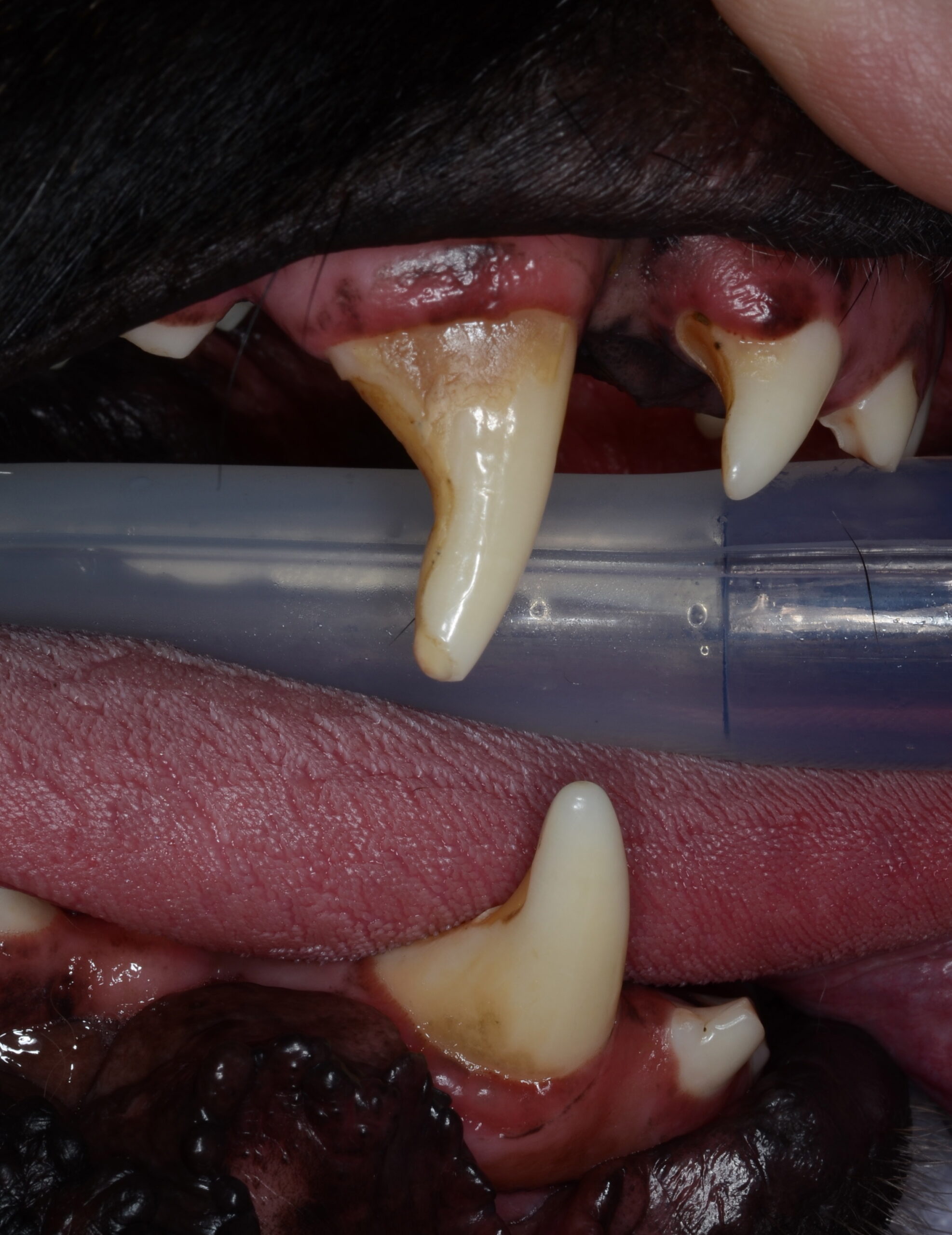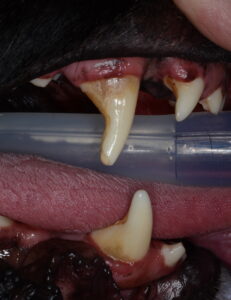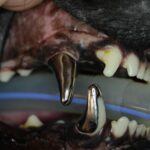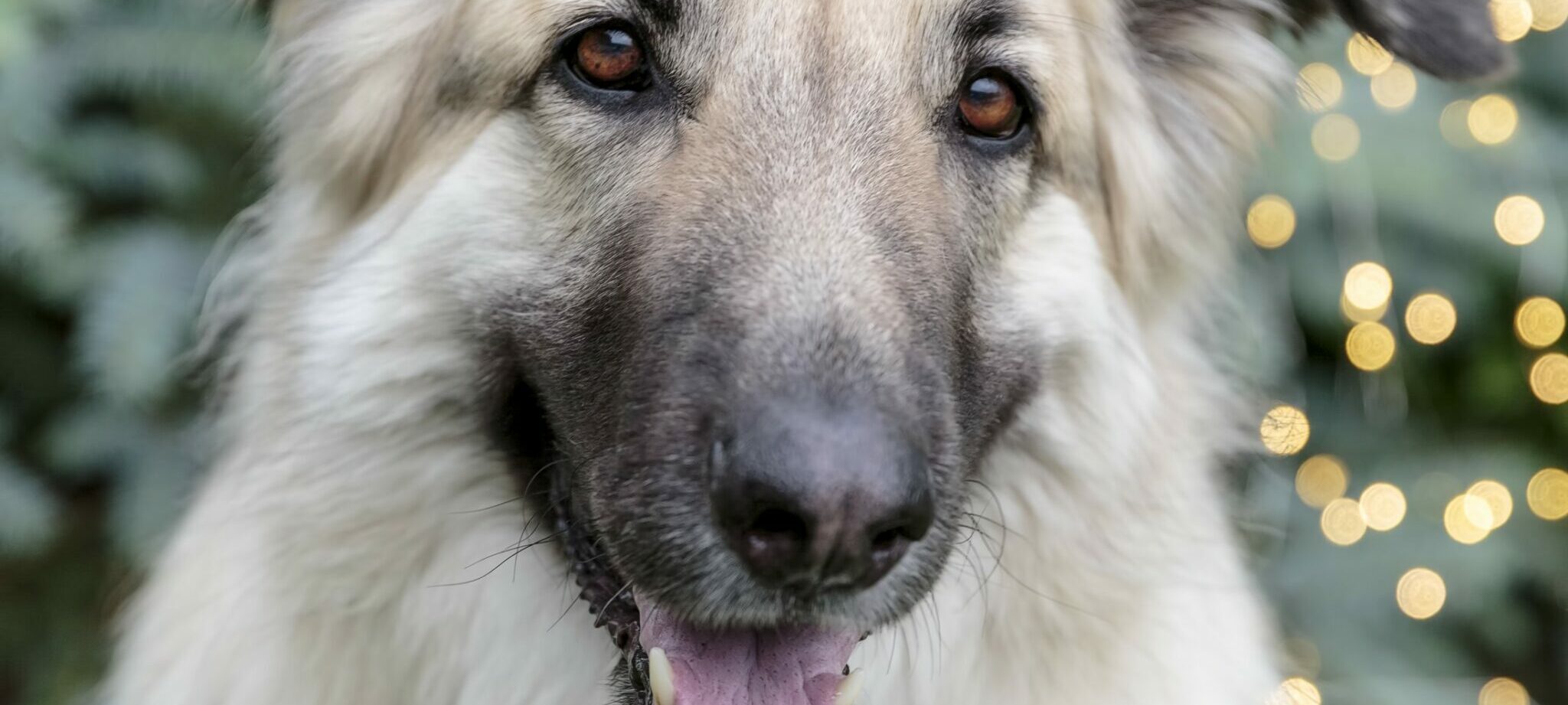
01 Dec Worn Canine Teeth? What Can You Do?

Abrasions on the distal (rear) part of the upper and lower canine teeth. This leads to extreme fatigue and possible tooth fracture (break) when stressed.

Full coverage crown on the upper (maxillary) canine and 3/4 crown on the lower (mandibular) canine tooth to protect from further abrasions.
Let’s say your beloved dog loves to chew on bones, tennis balls, or even unfortunately a cage or kennel. What comes next is the traumatic abrasion to the back end of a very important tooth (canine tooth). Constant abrasion can remove essential enamel (tooth covering) and even dentin (underlying structure below enamel) which fatigues worn canine teeth. It can even kill a tooth.
Tooth fracture resulting in pulp (nerve and blood supply within a tooth) exposure can easily occur if your pet pulls or tugs using this already fatigued tooth. If you have ever broken a tooth, it is a very painful ordeal, and your pet will feel that same pain. Treatment for a broken tooth is root canal therapy or extraction.
However, you can preemptively protect this tooth by having a crown placed on the tooth to protect it once it starts to have significant abrasions. Adjusting your pet’s behavior is still important, but having a protective crown in place certainly does protect his ‘chops’ from a potentially painful tooth fracture.
Crowns are a good thing so consider them for your pet if he/she is abrading teeth.
Barden Greenfield, DVM, Dipl. AVDC


